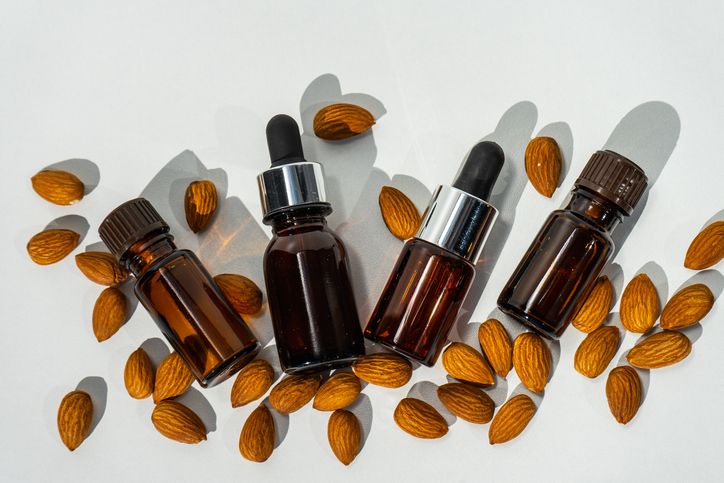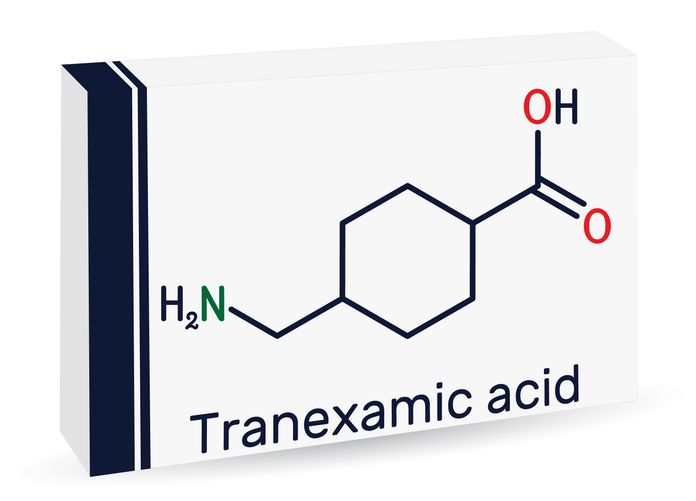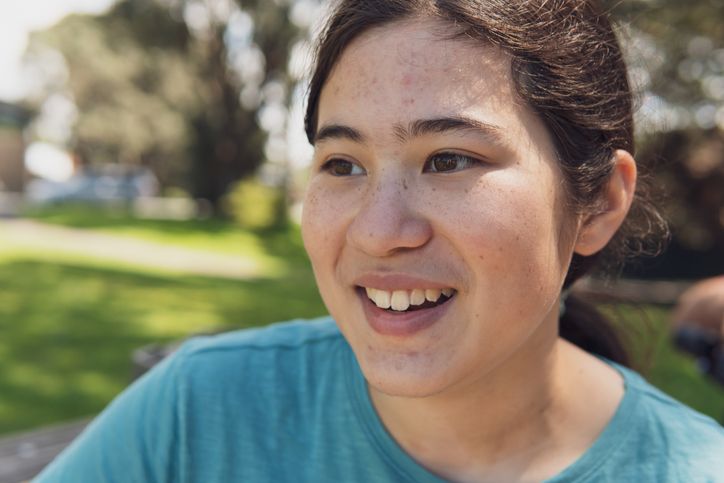- Home
- Trend
- Weight Loss Strategies
- Acne Tips
- Hair Health Information
- Blemish Removal Tips
- Acne Scar Removal Tips
- Muscle Building Techniques
- Intimate Care Tips
- Postpartum Intimate Care
- Eye Bags Wiki
- Tips for Face Slimming
- Secret of Permanent Hair Removal
- Breast Enlargement Tips
- Cure to Snoring
- Marionette Lines
- Skin-Tightening Secrets

免費體驗
A3 Laser Hair Removal Treatment
1 Minute Self-Registration
Date should not be before minimal date
Inflammatory hyperpigmentation, also called the dark spots that you might encounter after hair removal, is a common concern among those who seek silky-smooth skin. Whether you opt for shaving, waxing, or laser hair removal, the possibility of skin discoloration exists. But fear not! In this informative guide, we will delve into the intricacies of this condition, providing you with insights, expert advice, and effective solutions. Say goodbye to the worries of post-hair removal skin issues!
1
What is Inflammatory Hyperpigmentation After Hair Removal?

This is a dermatological condition characterised by the skin producing an excess of pigment in response to injury or inflammation. In the specific context of hair removal, this condition often arises due to the trauma inflicted on the hair follicles and the surrounding skin during the hair removal process.
This means that when you undergo hair removal, whether it's through shaving, waxing, laser treatments, or electrolysis, the skin perceives this as a form of injury or irritation. In response, it produces more melanin, the pigment responsible for skin colour, in an attempt to protect and repair itself. This overproduction of melanin can lead to the formation of dark patches or spots on the skin, which is what we refer to as inflammatory hyperpigmentation after hair removal.
2
Do not confuse it with postinflammatory hyperpigmentation!
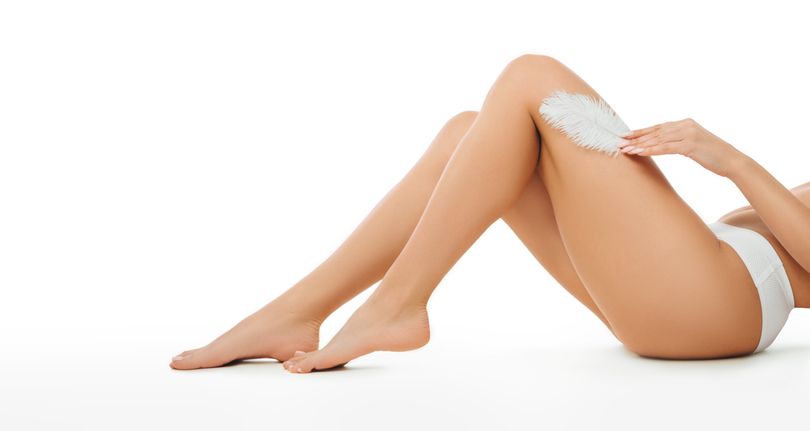
Post-inflammatory hyperpigmentation (PIH) and inflammatory hyperpigmentation are related but slightly different terms in the realm of dermatology. Here's the distinction between the two:
Inflammatory Hyperpigmentation
Definition: Inflammatory hyperpigmentation is a broad term that encompasses any situation where the skin produces excess pigment in response to inflammation or injury. This excess pigment leads to the darkening or discoloration of the affected skin.
Causes: Inflammatory hyperpigmentation can result from various triggers, including skin trauma, infections, inflammatory skin conditions (such as acne), and other factors that cause irritation or inflammation.
Examples: This term can be used to describe hyperpigmentation caused by a wide range of factors, not limited to a specific source of inflammation.
Post-Inflammatory Hyperpigmentation (PIH)
Definition: Post-inflammatory hyperpigmentation (PIH) is a specific type of inflammatory hyperpigmentation and one of the pigmentation disorders. It refers to the dark spots or patches that appear on the skin after an inflammatory or injury-inducing event has occurred. These dark spots are often a result of increased melanin production in response to the prior inflammation or injury.
Causes: PIH is directly linked to prior skin trauma, inflammation, or injury. Common causes include acne breakouts, insect bites, burns, cuts, and various skin conditions.
Examples: Acne scars that leave behind brown or red marks are a typical example of post-inflammatory hyperpigmentation.
In summary, while both terms refer to the darkening of the skin due to inflammation or injury, "inflammatory hyperpigmentation" is a broader term that encompasses any situation where excess pigment is produced in response to inflammation. On the other hand, "post-inflammatory hyperpigmentation (PIH)" specifically refers to the dark marks or spots that develop as a consequence of a previous inflammatory event, making it a subset of inflammatory hyperpigmentation.
- Unwanted Body Hair and Hirsutism: The Hidden Struggles Of Women
- Hair Removal Cream Buying Guide: Should You Choose a Sensitive Skin Formula? How to Remove Hair Properly?
- 3 IPL Hair Removal Myths Debunked: What You Really Need to Know Before You Try
- Waxing vs Shaving Body Hair: Comparison of Hair Removal Methods For Flawless Skin
3
Who Is More Prone to Get Inflammatory Hyperpigmentation?
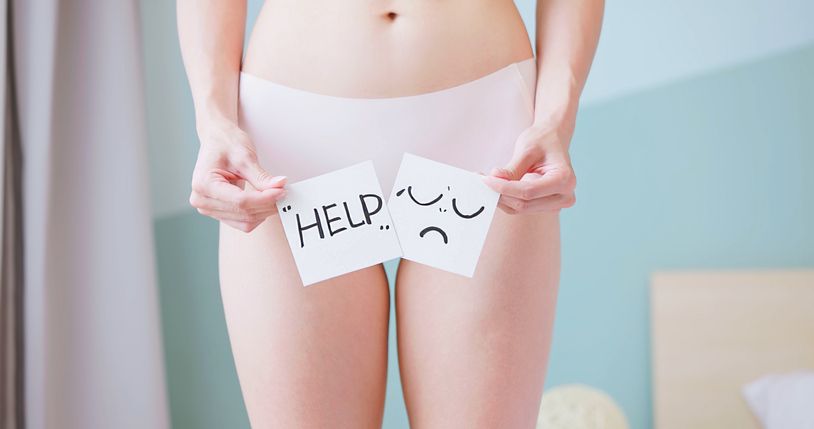
Inflammatory hyperpigmentation is a condition that can affect individuals of varying skin types, but certain factors can make some people more susceptible than others.
Understanding these contributing factors is essential for identifying who might be at a higher risk of developing hyperpigmentation following hair removal procedures.
Skin type
One of the primary factors that influence the likelihood of developing inflammatory hyperpigmentation is an individual's skin type. People with darker skin tones tend to be more susceptible to this condition compared to those with lighter natural skin tones. The reason behind this lies in the composition of melanin, the pigment responsible for skin colour. Darker skin tones naturally contain higher concentrations of melanin. As a result, their skin is inherently more reactive to various forms of irritation or inflammation, which can include the trauma associated with hair removal methods.
Hair removal technique
Another critical determinant is the choice of hair removal method and the manner in which it is executed. The risk of developing hyperpigmentation significantly depends on the approach used. Aggressive or improper hair removal techniques can lead to excessive skin trauma, which is a common trigger for inflammatory hyperpigmentation. When hair removal is not performed carefully, the skin can suffer from irritation, redness, and even small injuries, all of which may contribute to the development of hyperpigmentation.
Sun exposure
Exposure to ultraviolet (UV) rays from the sun is yet another influential factor in the development and exacerbation of hyperpigmentation. UV rays can stimulate melanin production within the skin. When the skin in the hair removal area is exposed to UV rays, it can lead to further darkening of already affected areas, making hyperpigmentation more noticeable. Therefore, it's crucial to take sun protection measures, such as applying sunscreen, to shield the skin from harmful UV rays, especially after hair removal procedures.
Although inflammatory hyperpigmentation can affect individuals across different skin types, those with darker skin tones are generally more prone to this condition due to their skin's heightened reactivity. Additionally, the choice of hair removal technique and sun exposure play crucial roles in determining the risk of developing hyperpigmentation. Understanding these factors can help individuals take proactive measures to prevent and manage this skin concern effectively.
4
Hair Removal Methods That May Leave You Dark Patches

Before we delve into the specifics of how to manage and prevent inflammatory hyperpigmentation, let's briefly explore the various hair removal methods that can potentially lead to this condition:
Shaving
Shaving involves using razors to remove hair from the skin's surface. It's a common and convenient method but can sometimes cause irritation, especially if not done carefully.
Waxing
Waxing is a method where hair is removed from the root using warm wax. It provides longer-lasting results but may also result in temporary redness, skin irritation, that can also cause that dark spot to happen.
Electrolysis
Electrolysis employs electric currents to permanently destroy hair follicles. It's suitable for those looking for a permanent hair removal solution but can also cause skin irritation.

免費體驗
A3 Laser Hair Removal Treatment
1 Minute Self-Registration
Date should not be before minimal date
5
Deal With Inflammatory Hyperpigmentation with Acids
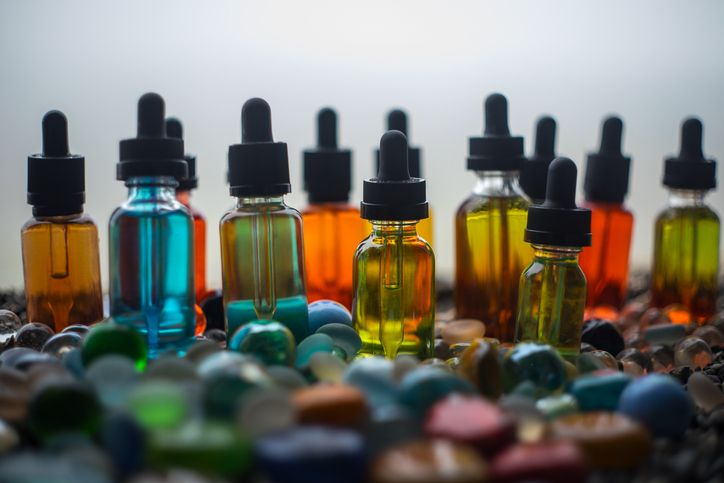
These little gems contain the potential to help treat and manage this skin condition. Here's how each of these acids is related to inflammatory hyperpigmentation:
1. Glycolic acid
Role: Glycolic acid is an alpha hydroxy acid (AHA) known for its exfoliating properties. It works by removing the top layer of dead skin cells, promoting skin cell turnover, and improving overall skin texture.
Benefits: Glycolic acid can be beneficial for individuals with inflammatory hyperpigmentation because it helps fade dark spots and uneven pigmentation. By exfoliating the skin, it encourages the removal of pigmented cells from the surface, revealing newer, less pigmented skin beneath. This can be particularly useful in treating post-inflammatory hyperpigmentation (PIH) caused by conditions like acne.
2. Azelaic acid
Role: Azelaic acid is a naturally occurring acid found in grains like barley and wheat. It has both exfoliating and anti-inflammatory properties. It's known for its ability to reduce the growth of bacteria on the skin's surface and to calm redness and inflammation.
Benefits: Azelaic acid can help address inflammatory hyperpigmentation by reducing inflammation and inhibiting the production of excess melanin (the pigment responsible for skin colour). This makes it effective for treating conditions like rosacea and acne, which often lead to PIH.
3. Kojic acid
Role: Kojic acid is derived from various fungi and is often used in skincare products for its skin-lightening properties. It works by inhibiting the production of melanin in the skin.
Benefits: Kojic acid is particularly useful for addressing hyperpigmentation, including post-inflammatory hyperpigmentation. By reducing the production of melanin, it can help fade dark spots and create a more even skin tone. It's often used in products designed to treat conditions like melasma and age spots.
In summary, these acids—glycolic acid, azelaic acid, and kojic acid—can play a role in managing inflammatory hyperpigmentation by addressing various aspects of the condition. Glycolic acid exfoliates the skin to remove pigmented cells, azelaic acid reduces inflammation and bacteria, and kojic acid inhibits melanin production. However, it's essential to use these acids carefully to ensure proper application and minimise the risk of side effects, especially for individuals with sensitive skin or specific skin conditions.
6
Other treatment options asides from topical treatment

Chemical Peels
Dermatologists can perform chemical peels, a procedure that involves applying a chemical solution to the skin. This solution exfoliates the top layer of skin, reducing pigmentation and revealing smoother, clearer skin underneath.
Laser Therapy
Laser treatments target excess pigment in the skin and break it down, leading to a more even skin tone. It's an effective option for those with stubborn hyperpigmentation.
Micro needling
This minimally invasive procedure uses tiny needles to create controlled micro-injuries in the skin. This stimulates collagen production and can improve both skin texture and hyperpigmentation.
- Say Goodbye to Ingrown Hair Woes: Why Preventing and Treating Ingrown Hairs Is Crucial
- Still Shaving Your Legs To Remove Leg Hair? Check Out How To Get Longer Lasting Smooth Legs Here
- Heat Rash Or Razor Burn? How To Tell The Difference And Find The Best Intervention
- Wax Strips Unleashed: Popular Way To A Fabulously Smooth Skin!
7
Prevention is Key: Say No to Inflammatory Hyperpigmentation with These Tips

Although there are ways and combination therapy that can help relieve this problem, but preventing inflammatory hyperpigmentation is often more achievable and less challenging than treating it after it has already occurred. Here are some essential preventive measures to consider:
Sunscreen
Applying a broad-spectrum sunscreen with a sun protection factor (SPF) of 30 or higher before sun exposure is crucial. Sunscreen helps shield the skin from UV rays and minimises the risk of further pigmentation, and this is especially important if you just get your unwanted hair removed.
Gentle Hair Removal
Opt for hair removal methods that are less abrasive to the skin. Gentle techniques can help reduce the likelihood of skin trauma and subsequent hyperpigmentation.
Avoiding Irritants
Harsh skincare products, such as those containing strong acids or fragrances, can exacerbate skin sensitivity and hyperpigmentation. Use gentle, hypoallergenic products instead.
Pick the right hair removal treatment
Ideally, go for laser hair removal, such as A3 Laser Hair Removal Treatment. Laser hair removal is a highly effective method that uses concentrated laser beams to target and inhibit hair follicles, preventing future hair growth. It's generally safe, and the chances of triggering skin reactions are way lower than other hair removal methods.
8
Lifestyle Habits You Need to Know for Preventing Post Hair Removal Dark Patches to Worsen

Maintaining overall skin health is essential for reducing the likelihood of inflammatory hyperpigmentation. Here are some lifestyle changes you can adopt to promote healthy skin:
1. Healthy diet
Consuming a diet rich in antioxidants and vitamins, such as vitamin C, can support skin health. These nutrients help combat free radicals and promote a youthful complexion.
2. Hydration
Staying well-hydrated is essential for skin hydration and overall health. Proper hydration can keep the skin supple and reduce the appearance of fine lines and wrinkles.
3. Avoid picking
Resist the temptation to pick or scratch at affected areas of hyperpigmentation. Picking can worsen the condition and lead to scarring.
In conclusion, understanding inflammatory hyperpigmentation after hair removal, its causes, prevention strategies, and treatment options is essential for maintaining smooth and blemish-free skin. With the right knowledge and proper care, you can confidently address this common skin concern and achieve the skin you desire!

免費體驗
A3 Laser Hair Removal Treatment
1 Minute Self-Registration
Date should not be before minimal date
FAQ

1. Can anyone develop inflammatory hyperpigmentation after hair removal?
Yes, inflammatory hyperpigmentation can potentially affect individuals of all skin types and tones. However, it is more commonly observed in individuals with darker skin tones. This increased prevalence in people with darker skin is primarily due to the fact that their skin naturally contains higher levels of melanin, the pigment responsible for skin colour. As a result, their skin is more reactive to various forms of irritation or inflammation, including that caused by hair removal methods. While it can occur in individuals with lighter skin as well, those with darker skin may be more prone to developing post-inflammatory hyperpigmentation after hair removal procedures.
2. How long does it take for hyperpigmentation or skin discoloration to fade?
The duration for hyperpigmentation or skin discoloration to fade varies from person to person and depends on several factors. These factors include the severity of the hyperpigmentation, the individual's skin type, the specific treatment methods used, and how diligently the treatment regimen is followed. In general, it can take several weeks to several months to see noticeable improvements in the appearance of hyperpigmentation. Consistency in treatment and proper sun protection (using sunscreen) are key to achieving faster and more effective results.
3. Can I undergo laser hair removal if I have a history of hyperpigmentation?
If you have a history of hyperpigmentation and are considering laser hair removal, it is essential to consult a dermatologist before proceeding with the treatment. A dermatologist can assess your specific skin condition and medical history to determine the suitability of laser hair removal for you. They can provide valuable guidance on whether the treatment is safe and recommend any necessary precautions to minimise the risk of exacerbating or triggering further hyperpigmentation. In some cases, alternative hair removal methods or modified laser protocols may be suggested to ensure your skin's well-being.
4. Besides inflammatory hyperpigmentation, can hair removal cause atopic dermatitis?
Hair removal procedures themselves do not typically cause atopic dermatitis. Atopic dermatitis, also known as eczema, is a chronic skin condition characterised by redness, itching, and inflammation. However, certain hair removal methods, especially when not performed correctly or with inadequate aftercare, can potentially exacerbate or trigger skin irritation, including eczema flare-ups, in individuals with a predisposition to the condition. It's essential to take proper precautions, use appropriate products, and follow recommended skincare practices to minimise the risk of skin reactions when undergoing hair removal.
5. Is inflammatory hyperpigmentation permanent?
In many cases, inflammatory hyperpigmentation is not permanent and can be effectively treated with the right approach. The success of treatment depends on factors such as the type and severity of hyperpigmentation, the individual's skin type, and the chosen treatment methods. Topical treatments, chemical peels, laser therapy, and other dermatological procedures can be used to target and reduce hyperpigmentation. With proper care and consistency, many individuals can achieve a more even skin tone and reduce the appearance of inflammatory hyperpigmentation over time.






